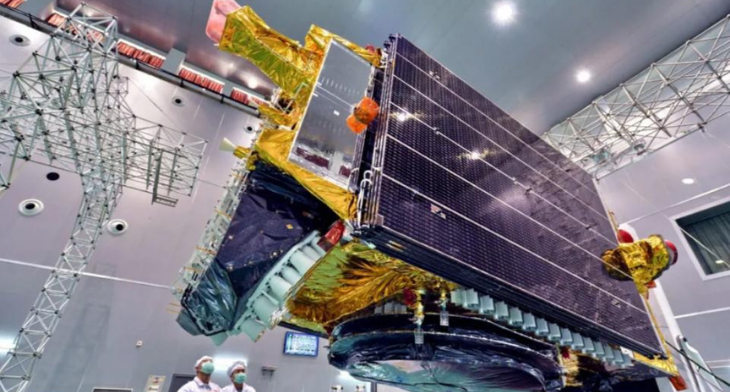
The APSTAR-6D satellite (pictured during manufacture), the first extreme high throughput satellite (XTS) from Panasonic, has entered service over the Asia-Pacific region.
According to Panasonic APSTAR-6D is an integral part of its third-generation communications (Gen-3) network of high speed, high bandwidth Ku-band satellites, placing capacity where it is most needed to meet the growing needs of airlines and their passengers.
The company is set to complete the upgrade of the 2,544 aircraft installed with its connectivity service to its Gen-3 network within the next month. Over 1,000 commercial aircraft are committed to being installed with its connectivity services and linked to the Gen-3 network from the outset.
APSTAR-6D was jointly designed by APSATCOM and Panasonic Avionics. It will provide airlines with multiple gigahertz of new Ku-band capacity over China and high-density routes around East Asia, including Tokyo, Seoul, Beijing, Shanghai, Hong Kong, Malaysia, Singapore and Indonesia using narrow XTS spot beams.
In addition, APSTAR-6D provides high throughput satellite (HTS) coverage over its full field of view including the Pacific Ocean, Indian Ocean, Australia and the Southern Oceans down to Antarctica, which includes areas not served by any other HTS satellite.
Panasonic Avionics is currently engaged in active and ongoing trials with airlines to demonstrate the high data rate capabilities of its Gen-3 network. The company expects that airline passengers flying in the region served by APSTAR-6D will also take advantage of the enhanced connectivity that XTS delivers to use high-bandwidth apps in flight.
Ken Sain, Chief Executive Officer of Panasonic Avionics Corporation, said: “We are planning further investment in our global network of Ku-band satellites for use by commercial airlines in the years ahead. For example, our second XTS, Eutelsat 10B, is due to launch next year and will provide enhanced connectivity over Europe and the Middle East. Additional capacity commitments are also planned.”
APSTAR-6D was successfully launched in July 2020 from Xichang Satellite Launch Center.





